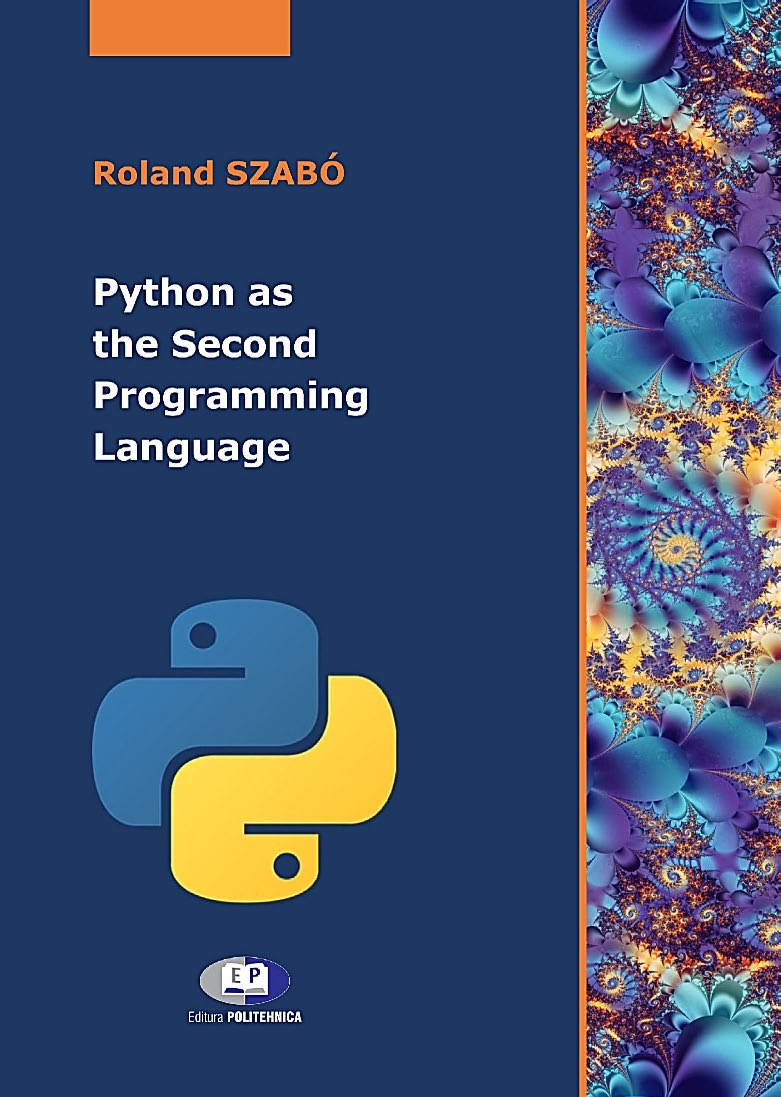Descriere
Cartea prezintă metodele și tehnicile de programare în limbajul de programare Python, utile pentru oricine, care dorește să învețe acest limbaj de programare, cartea având un nivel ușor spre avansat. Sunt prezentate aspecte teoretice despre acest limbaj de programare, cu utilizarea multiplelor exemple, care sunt ușor de înțeles. Cartea se concentrează în principal pe software, dar există și câteva aspecte legate de hardware. Cartea este un instrument valoros și foarte util pentru inginerii care intenționează să utilizeze programarea în limbajul de programare Python în munca lor.
TABLE OF CONTENTS
NOTATIONS, ABBREVIATIONS, ACRONYMS
LIST OF TABLES
LIST OF FIGURES
- INTRODUCTION
- What Can I Do with Python?
- Using Python on Windows
- Installing Python on Windows
- Running Python on Windows
- Run Python from Command Prompt
- The easy_install vs pip
- Alternative Python IDEs
- Spyder
- Canopy
- PyDev
- Others
- The iPython Notebook
- Using Python on Linux
- Installing Python on Linux
- Python with Linux GUI
- Python with Linux Command Line
- Using Python on Macintosh
- Installing Python on Macintosh
- Updating the Profile from the Shell
- Default Application Set Up
- BASICS
- Python Programming Principles
- Python Syntax
- Interactive Programming
- Script Mode Programming
- Lines and Indentation
- Quoting in Python
- Writing Comments
- Getting User Input
- Multiple Statements
- Variables
- Single Assignment
- Multiple Assignment
- Data Types
- Numbers
- Strings
- Operators
- Arithmetic Operators
- Comparison Operators
- Assignment Operators
- Membership Operators
- Loops, Statements, Functions
- Loops
- The “while” Loop
- The “for” Loop
- The Sequence Index
- Decision Making
- The “if” Statement”
- The “if...elif...else” Statement”
- The “elif” Statement”
- The Nested “if” Statement”
- Python Functions
- Function Definition
- Function Call
- Parameter Passing Strategies
- Required Arguments
- Keyword Arguments
- Default Arguments
- Variable-length Arguments
- Mapping
- Filtering
- An Anonymous Function
- The “return” Statement
- The Variable Scope
- CLASSES, OBJECTS
- Python Classes and Objects
- Creating Python Classes
- Instantiating Classes
- Access Attributes
- Built-in Attributes
- Garbage Collection
- Inheritance
- Method Overriding
- Operator OverloadingError! Bookmark not defined.
- Data Hiding
- DATA STRUCURES
- Lists
- Accessing List Values
- Updating Lists
- Deletion of List Elements
- List Operations
- The “cmp()” Function
- The “max()” Function
- The “min()” Function
- The “list()” Function
- The “count()” Method
- The “index()” Method
- The “insert()” Method
- The “extend()” Method
- The “remove()” Method
- The “pop()” Method
- The “reverse()” Method
- The “sort()” Method
- Python Dictionary
- Updating a Dictionary
- Deleting from a Dictionary
- Dictionary Operations
- The “cmp()” Function
- The “len()” Method
- The “str()” Method
- The “type()” Method
- The “clear()” Method
- The “copy()” Method
- The “fromKeys()” Method
- The “get()” Method
- The “update()” Method
- Tuples
- Regular Expressions
- Regular Expressions in Python
- Exceptions, Modules
- Exceptions
- Custom Exceptions
- Packages and Modules
- Import Statement
- The “os” Module
- Logging
- Data Serialization
- File Operations
- Data Serialization with JSON
- Data Serialization with pickle
- Importing pickle
- Encoding, Decoding
- Streams
- Object Reconstruction
- Unpicklable Objects
- Circular References
- HardWARE MODULES
- Opening Serial Ports
- Configuring Ports Later
- Readline
- EOL
- Listing Ports
- Accessing Ports
- Native Ports
- RS485 Support
- RFC 2217 Network Ports
- Exceptions
- Constants
- Functions and Attributes
- Sockets, THREADS
- Sockets
- Threads
- IMAGE PROCESSING
- PIL
- OpenCV for Python
- Read an Image
- Display an Image
- Write an Image
- Image Handling
- Using Matplotlib
- Capture Video
- Playing Video
- Saving Video
- Drawing a Line
- Drawing a Rectangle
- Drawing a Circle
- Drawing an Ellipse
- Drawing a Polygon
- Adding Text to Images
- Final Image
- Modifying Pixel Values
- Accessing the Properties of Images
- Image ROI
- Channel Splitting and Merging
- Arithmetic Operations on Images
- CODe TESTING
- Introduction to Code Testing
- Unittest
- Doctest
- Nose
- Testing Exceptions
REFERENCES



